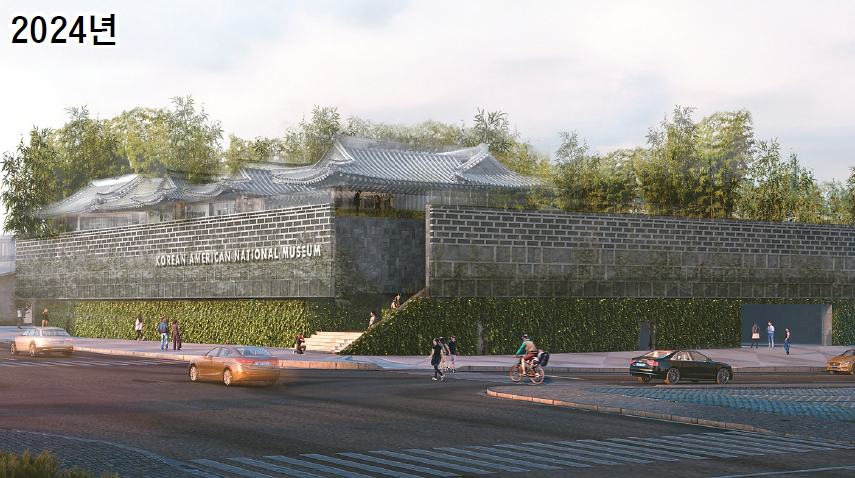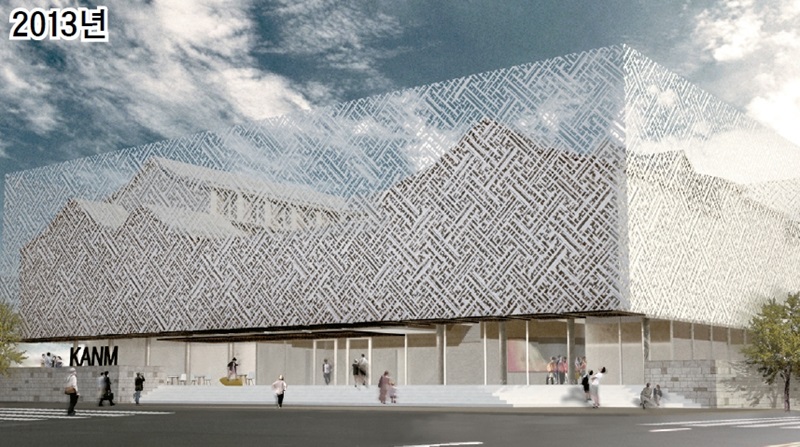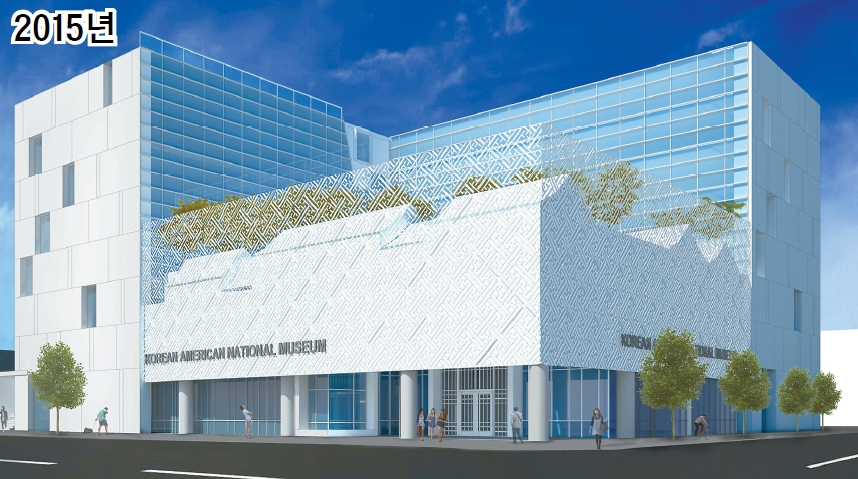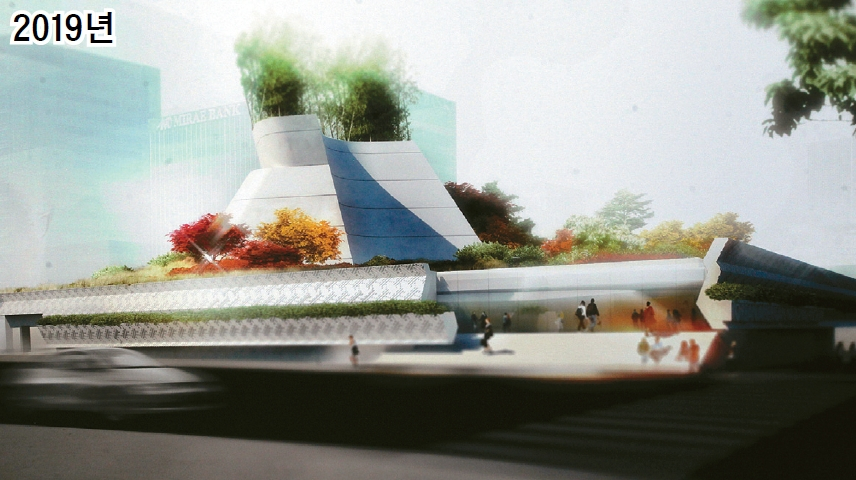Questions are mounting over why the Korean American National Museum project, which has not commenced construction for over a decade, is resetting to its initial phase.
The board of directors of the proposed Korean American National Museum said in a March 19 press release that it is considering a new design amid delays in the Los Angeles city government’s administrative process.
The new architectural design the board is considering is a stand-alone building. This would be the third design change since the first design was unveiled in 2013.


Each time, the board has cited plausible reasons for the design change. The first change in 2015 was based on operational costs. The plan was to build an apartment building on the museum grounds and use the rental revenue to pay for management costs. However, the idea of an “apartment in a museum” was criticized by the public.
Then, in 2019, the museum announced a new design. Perhaps conscious of the criticism, the apartment building was scrapped, and only the museum was planned.
However, after five years, they have changed the design again. It was a return to the original plan, announced in April 2013, to build a traditional Korean-style single building. The reason for the design change this time is construction costs.
“The design was changed to a more modern and streamlined one to reduce costs, as construction costs have been rising sharply since 2019,” said Shinae Yoon, secretary-general of the museum. “We were convinced that we would not be able to proceed with construction at the previously estimated cost of $35 million to $40 million.”
The board is worried about the cost of construction but not the money wasted on design changes. According to the Citizens’ Sponsorship Committee, a group calling for the construction of the museum, more than $2.5 million has been spent on design costs alone.
The redesign is not the only problem. The board said that the project has been stalled by administrative issues with the LA city government.
“The board is currently working with a pro-bono legal team to resolve the situation,” the board of directors of the museum said in a press release, “which requires coordination with 10th District Council member Heather Hutt and the LA City Attorney’s Office, which is handling legal matters.”
A representative from Hutt’s office said, “We met with the Korean American National Museum side in October of last year and were briefed on the new design and have had no further contact since then.” The representative added, “However, we cannot disclose what was discussed with the Korean American National Museum side at that time because it was a ‘private’ meeting.”
According to Hutt’s office, the two sides are unable to transparently disclose the legal coordination and progress of the project to the Korean-American community. They don’t specify what the legal issues are, and I wonder if the “legal issues” are too serious to disclose.


On March 21, a public hearing was held by residents who pointed out the problems with the stalled museum project and demanded transparency. It was a public hearing organized by Korean Americans voluntarily.
The public hearing is summarized by the phrase, “We really want to know.” Throughout the hearing, participants pointed out that the board’s operations and the project’s progress have been shrouded in secrecy.
The construction delays are frustrating, but the board’s opaque and poor management is even more problematic.
For starters, there’s a lack of financial disclosure. The board released a new design, while revealing $14.5 million in funding from the city, state, and federal governments. But it has not disclosed how much money it has received from individuals, corporations, and others, or how exactly it has spent it.
It is difficult to determine how much money has been raised and how it is being spent. The board claims that the information is available to the public through Internal Revenue Service filings. As it is of interest to the Korean-American community, it is desirable for the museum board directly to make public the financial report to the community.
Alternatives were also presented at the public hearing, including an Armenian museum under construction in Glendale. “If you go to the website of the Armenian Museum, the financial situation and the construction process are all disclosed in great detail,” said Kookhee Bae, a senior advisor to the National Unification Advisory Council. “The Korean American National Museum project should also be transparent to the community and let everyone build together.”
The current website (kanmuseum.org) has been closed for several years. On the homepage, the words “Korean American Museum (in Korean)” are repeated in large letters on the screen.
According to the California prosecutor’s office, the museum directors failed to submit the proper documents, leaving the nonprofit organization’s registration status as “delinquent.” This shows how poorly the board is run.
The Korean American National Museum is a project for the entire Korean-American community, not just a few individuals. There is currently a petition to improve the project. This movement reflects the current management issues of the board. More than 250 people have signed the petition, and the sponsors are aiming for 10,000 signatures.
The proposed museum has been a long-awaited project of the Korean-American community since 1991 when it was founded by David Hyun, a senior architect, and led by Susan Ahn, the daughter of Dosan Ahn Chang Ho, Colonel Youngok Kim, and Olympic gold medalist Dr. Sammy Lee.
The city of Los Angeles granted a long-term lease of the site to the museum for almost free in 2013, but the project has been stalled ever since. It is time for the museum directors to change their attitude, transparently disclose the progress of the project, and build it together with the Korean-American community.
By Mooyoung Lee lee.mooyoung@koreadaily.com

![Korean President Yoon Suk Yeol just got ousted. What’s next? President Yoon Suk Yeol attends the opening session of the Ministerial Conference of the Third Summit for Democracy in March last year. The Constitutional Court upheld the National Assembly’s impeachment of Yoon, ousting him from office on April 4. [YONHAP]](https://www.koreadailyus.com/wp-content/uploads/2025/04/0404-Yoon-100x70.jpg)
![Korean President Yoon Suk Yeol ousted from office after unanimous Constitutional Court ruling President Yoon Suk Yeol, right, delivers his closing statement at the 11th and final hearing of his impeachment trial at the Constitutional Court in Jongno District, central Seoul, on Feb. 25. [CONSTITUTIONAL COURT]](https://www.koreadailyus.com/wp-content/uploads/2025/04/0403-impeach-100x70.jpg)
![Clovine accelerates global expansion in collaboration platform market Website of Clovine, a cloud-based project management provider [Screenshot]](https://www.koreadailyus.com/wp-content/uploads/2025/04/0403-clovine-100x70.jpg)
